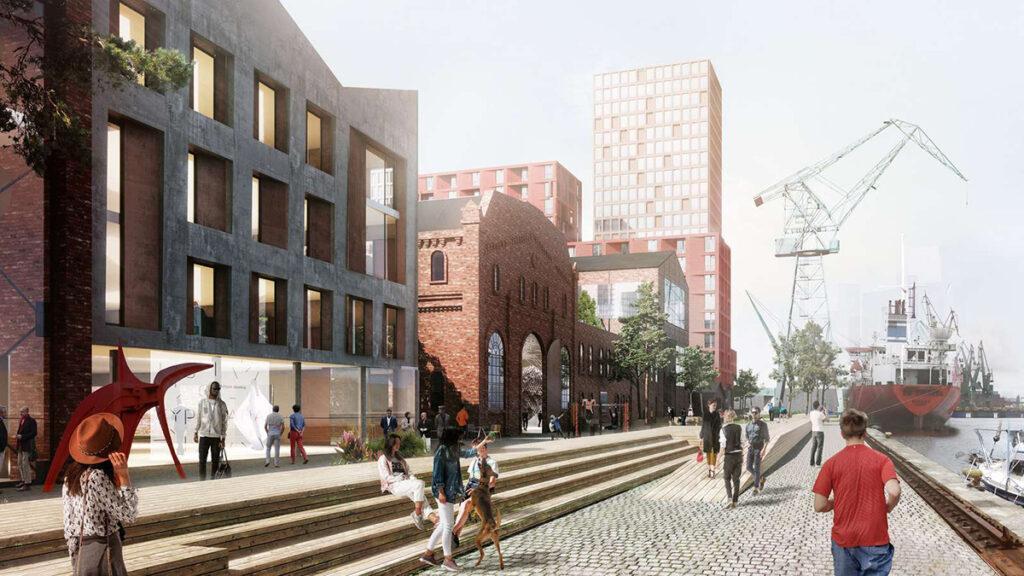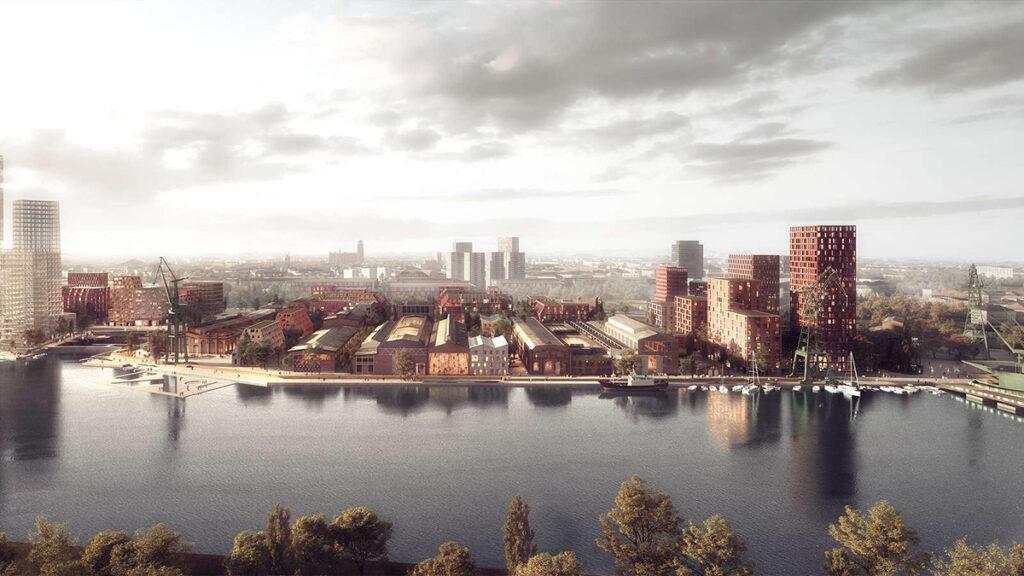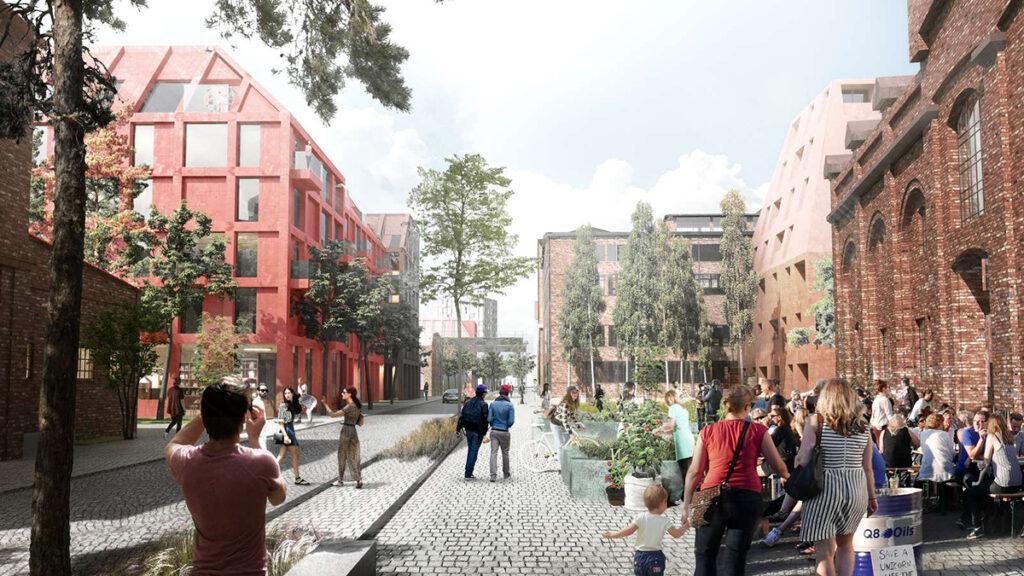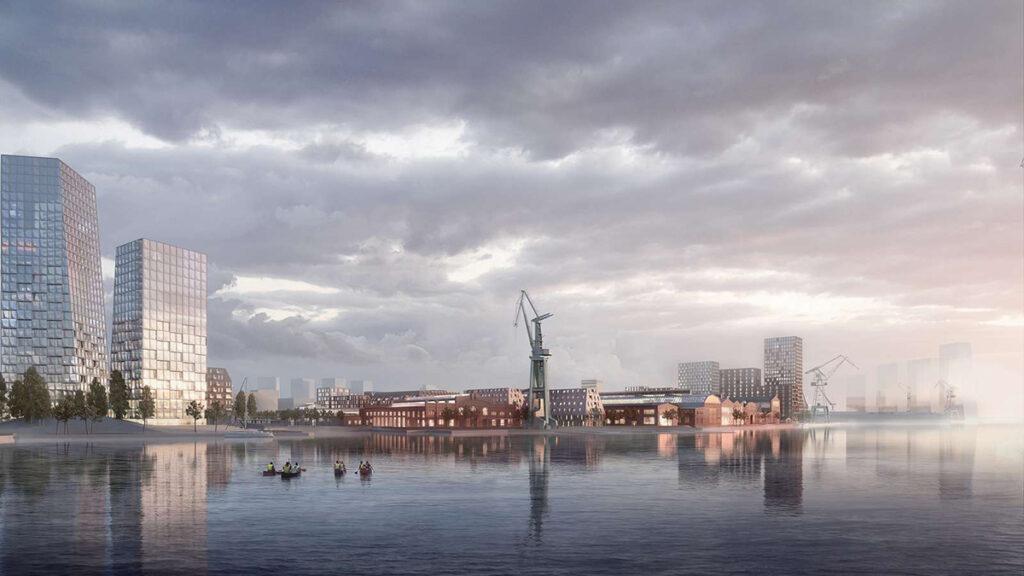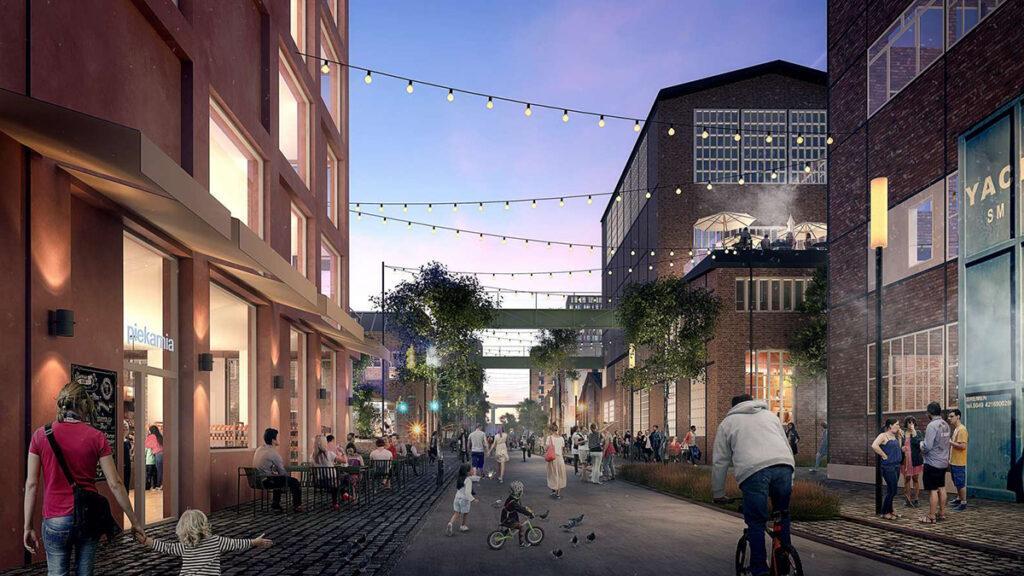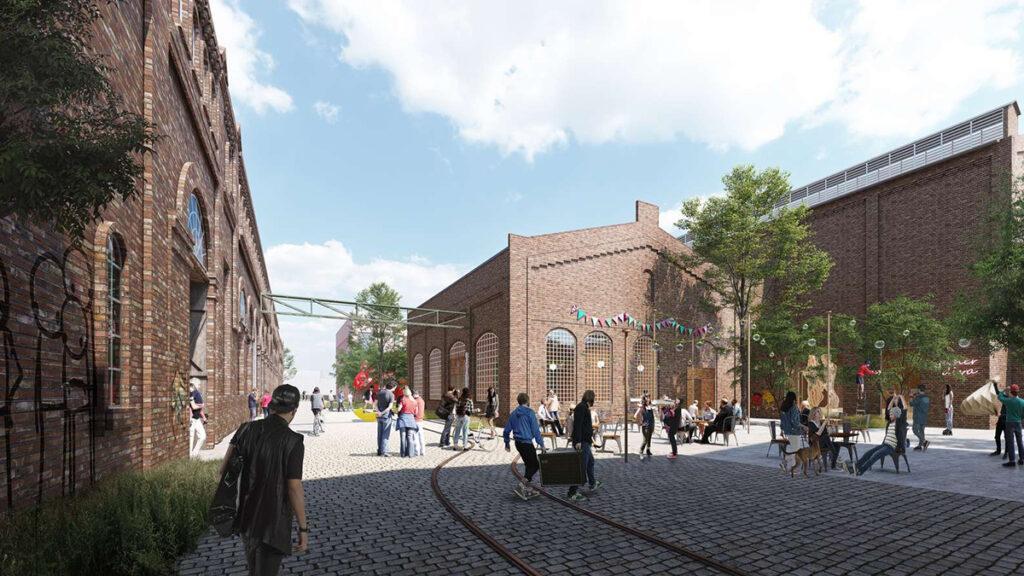New look for old shipyard
The Imperial Shipyard in Gdańsk has had an eventful history. This historical setting is now to be revitalized and transformed into an attractive district. The master plan for the old shipyard is the brainchild of Danish architectural firm Henning Larsen. Before construction work begins, fields of sunflowers will be used to prepare the ground – in every sense of the word.
Warships used to be built here. These days, Instagram fans come in search of morbid photo motifs. And the old industrial site certainly hasn’t lost its charm. This is not just due to its historical walls: established in 1844, Gdańsk’s Imperial Shipyard was the region’s economic driving force for many years. And it was the predecessor of the very Gdańsk shipyard that operated as the “Lenin Shipyard” from 1950 until the fall of communism – one of the legendary seedbeds of the Polish democratic movement.
Major urban waterfront project
Having lain idle for years, large parts of the former “Imperial” are now to be given a new lease on life: a master plan devised by Danish office Henning Larsen will be transforming it into an attractive part of the city’s old town.
Imperial Shipyard as a future hotspot
Covering a total area of 400,000 square metres, the project is to pay tribute to Gdańsk’s history while “giving the Imperial Shipyard back to its people”. It will offer new public spaces and collectively used gardens and roofs, plus 3,500 residential units and attractive locations for offices, companies, shops and workspaces. Not to mention cultural institutions, waterfront recreation facilities and lots of greenery.
When working on the complex mixed-use concept, Henning Larsen teamed up with Warsaw office BBGK Architekci and Gdańsk-based A2P2 Architecture and Planning. The project developers are two Belgian companies, Revive and Alides. For the Danish architectural studio, this revitalization is just one of three current city planning projects with waterfront locations.
Urban waterfront expertise
As well as taking part in the international competition for redesigning the legendary Imperial Shipyard in Gdańsk, Henning Larsen’s team sought out two more waterside projects in 2018: Belfast Waterfront and Key West in Brussels.
However, while a completion date has been scheduled for Belfast’s urban waterfront paradise, no such move has been made for Gdańsk. According to developer Revive’s website, this is because the project is still at an early stage. However, the concept promises great things for the Polish city.
The plan includes three core zones around which the project is to be developed: a spacious plaza, a park and the dock. Fittingly, the plaza will be built at a historically significant location: the famous Sala BHP building – the former Health and Safety Hall. This is where the Gdańsk Agreement was signed in 1980, paving the way for the independent, self-governing trade union Solidarity.
Focal points: plaza, park and dock
In the place where the workers’ movement triumphed, the city will benefit from a new venue for market days, leisure sport activities and cultural events. As lush urban woodland, the park will attract people with its natural surroundings and enviable views of the city and the river.
From our experience creating urban development schemes around the world, we know that an activation of the public realm is one of the keys to success.
Jacob Kurek, partner at Henning Larsen Architects
The architects see the dock as the heart of the new district. The waterfront will be accessible for local people, while the Imperial Shipyard will be connected quickly and easily with the city centre. Wide pavements, wooden benches, beach, marina and sporting activities such as kayaking are sure to encourage many local people to spend their leisure time by the water.
“From our experience creating urban development schemes around the world, we know that an activation of the public realm is one of the keys to success,” explains Henning Larsen partner Jacob Kurek. It was also important to create attractive pathways and cycle lanes as an alternative to roads: “From Copenhagen we know how a reduction of car traffic in the inner city and by the harbour front creates well-being and better living conditions for people.”
Preparing the ground with sunflowers
Henning Larsen has come up with a novel idea for the pre-construction phase: “We intend to plant a sunflower field that will revitalize the area. This is a natural method of removing pollutants from the ground and preparing it for construction work.”
Fun in the water
By using natural filtration technologies, it is also possible to ensure that water from the canals can be used safely for aquatic fun and games: “We hope that, by reviving nature before construction work begins, we can encourage the people of Gdańsk to visit the shipyard, enjoy the beautiful sunflowers and maybe even jump in the water for a swim.”
It still remains to be seen how long it will be before the planned new district also attracts residents and visitors in its own right. However, there is no doubt that the revitalized Imperial Shipyard will return to its former glory – from both a social and economic perspective.
A leisurely walk from shore to city
Jacob Kurek: “It was important for us to pay tribute to the unique history of the Imperial Shipyard, which is still visible in the remaining historical buildings. Having been at the heart of the workers’ movement, many families still feel a very personal connection to the site. Opening up the waterfront to be accessed publicly as well as creating a pedestrian and bicycle-friendly connection to the city centre will help to give the Imperial Shipyard back to its people.”
The decision by the competition judges and Quality Committee members to choose the Danish architects’ design has much to do with its delicate marriage of past and future: the different building types and healthy functional mix are therefore ideal for enriching the city experience and improving its marketability. And, once built, it will be sure to have a new “Instagrammability” of its own.
Text: Elisabeth Schneyder
Translation: Rosemary Bridger-Lippe
Images: Henning Larsen
